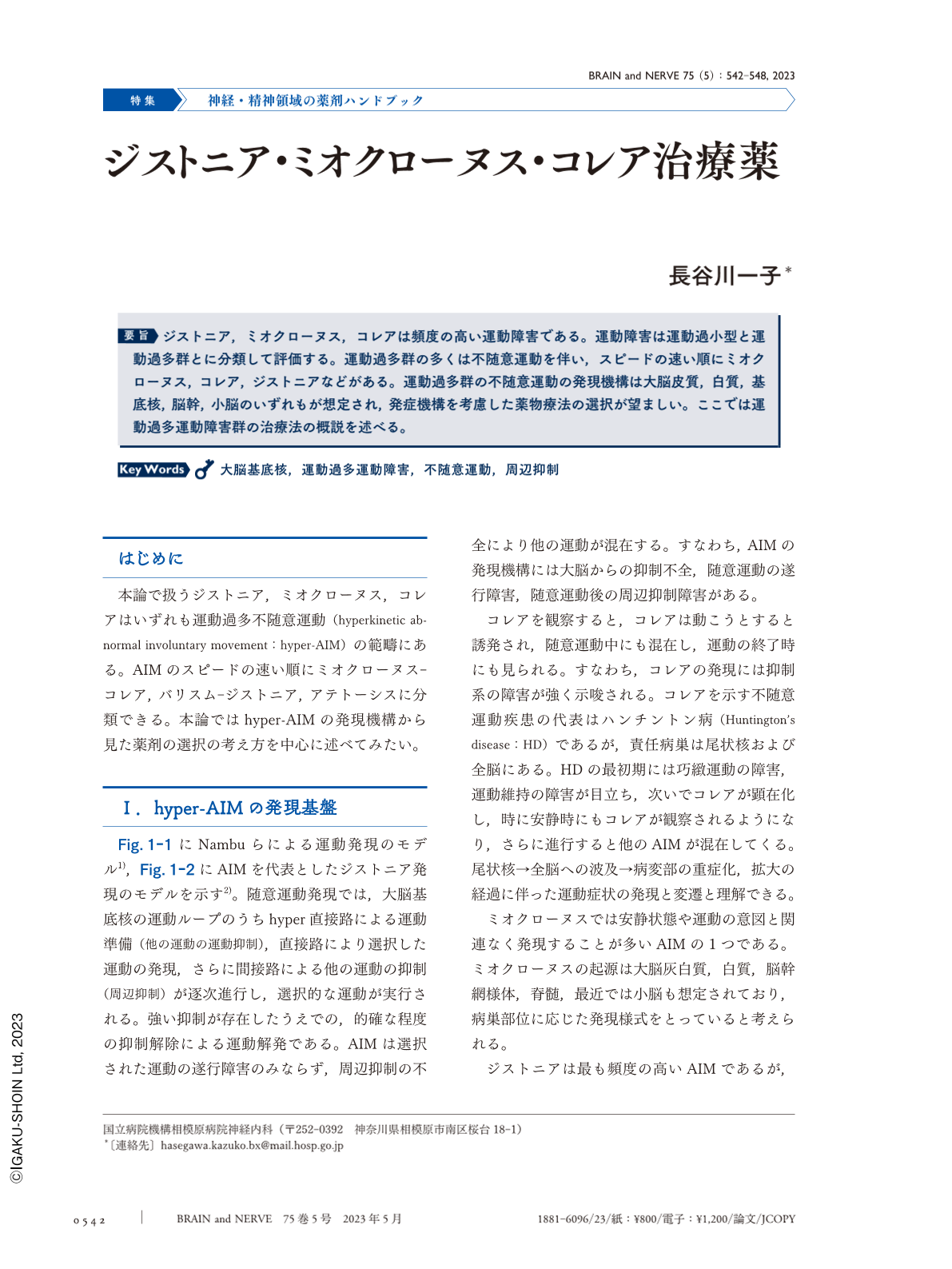Japanese
English
- 有料閲覧
- Abstract 文献概要
- 1ページ目 Look Inside
- 参考文献 Reference
ジストニア,ミオクローヌス,コレアは頻度の高い運動障害である。運動障害は運動過小型と運動過多群とに分類して評価する。運動過多群の多くは不随意運動を伴い,スピードの速い順にミオクローヌス,コレア,ジストニアなどがある。運動過多群の不随意運動の発現機構は大脳皮質,白質,基底核,脳幹,小脳のいずれもが想定され,発症機構を考慮した薬物療法の選択が望ましい。ここでは運動過多運動障害群の治療法の概説を述べる。
Abstract
Abnormal involuntary movement (AIM) are usually classified into hypokinesia and hyperkinesia group. Hyperkinesia-AIM includes myoclonus, chorea, ballism, dystonia, athetosis, and more. Of these, dystonia, myoclonus, and chorea are frequent movement disorders. From a neurophysiological point of view, the mechanism of motor control by the basal ganglia is thought to consist of three pathways: hyperdirect, direct, and indirect. Hyperkinetic-AIMs are likely caused by the dysfunction of any of these three pathways, leading to malfunction in either presurround inhibition, initiation of motor performance, or postsurround inhibition. These dysfunctions are assumed to stem from regions, such as the cerebral cortex, white matter, basal ganglia, brainstem, and cerebellum. Drug therapies that consider the pathogenesis mechanism are desirable. Here, we presented an overview of treatment methods for hyperkinetic-AIMs.

Copyright © 2023, Igaku-Shoin Ltd. All rights reserved.


